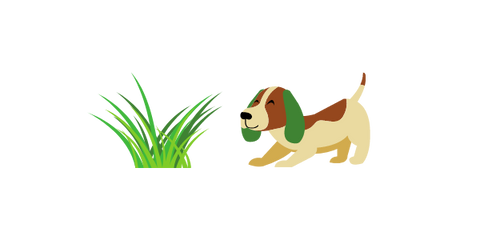When we talk about self-medication, we usually are talking about human behavior, but we humans aren’t the only ones who do it.
Self-medication is the act of consuming an external substance in order to alleviate either physical or mental ailments. This can look like taking over-the-counter medicines like Tylenol to treat a headache, adding wellness supplements to your diet, or even having a few puffs from a stelo™ Relax or stelo™ Relief to help relax after a long day.
Most of us self-medicate in some form or another, but this behavior isn’t unique to homo-sapiens. Many animals also self-medicate. Let’s take a look at some interesting examples of self-medication in the animal kingdom.
Birds

Birds are known for exhibiting some particularly human-like behavior, like speaking, making tools, and also self-medicating.
Many varieties of parrots consume clay, which helps their gut biome by absorbing toxic compounds. The clay is also full of healthy minerals that can benefit the bird’s overall health.
Hundreds of songbirds also employ topical medication, similar to our usage of a curative balm or lotion, in a process called “anting.” These clever avians have found that rubbing ants all over their feathers can help get rid of parasites. Songbirds have learned to choose ants that release formic acid, killing any annoying lice hiding out in their feathers.
Ants

Not only are ants used by birds as a form of self-medication, but they also self-medicate themselves. They’ve been observed ingesting toxic substances they usually avoid when afflicted with fungal infections. While these types of substances are normally dangerous, when consumed in measured amounts, they can actually help fight the infection and lead to higher survival rates.
Dogs

Anyone who’s ever been a dog parent knows grass-eating is a warning sign that something might be wrong with your pooch. Domestic dogs will chow down on grass and dirt to induce vomiting when they’re feeling nauseous.
Cats

There is another common household pet that’s known to self-medicate––your cat!
That’s right, both domestic cats and wild big cats like lions are attracted to the plant nepeta criteria. You may know it by its informal name, catnip. It’s actually the terpenoid nepetalactone in catnip that kitties crave. In roughly two-thirds of household cats, nepetalactone can produce an intensely excited state. Nepeta criteria is also a natural insect repellent, which may explain the evolutionary reason behind feline’s attraction to the plant.
Bears

The North American brown bear will actually take osha roots and grind them into a paste with its saliva. The bears then apply this paste to their skin topically in order to repel mosquitoes and other pests. Legend has it that the Navajo people learned to use the osha root medicinally by watching these brown bears.
Monkeys
Monkeys are primates just like humans, and therefore share some similar traits, including an inclination to self-medicate. Like birds, monkeys will eat clay despite its lack of nutritional value because it absorbs gut toxins and can relieve an upset stomach.
One captive capuchin monkey was even seen using a sugar-based syrup to treats the wounds of her child.
Chimpanzees

Other primates, like chimps, also have been observed self-medicating.
Chimpanzees will chew on bitter pith leaves that have anti-parasitic properties to help prevent parasites, as well as swallow rough-edged leaves whole to help remove existing parasites from their digestive systems.
Elephants

These massive mammals are part of a club of animals, including birds, monkeys, and moose, who have a taste for alcohol. African elephants are known for feasting on fallen fermenting marula fruit until they’re walking a little wobbly.
Elephants will also chew leaves from the boraginaceae family of trees in order to induce labor. Understandable considering a single elephant mother may be pregnant for as long as 22 months. Women from Kenya apparently brew these leaves into a tea for the same exact purpose.
Dolphins

Dolphins are some of the most intelligent creatures in the entire world, with brains as complex as humans. Believe it or not, these incredibly smart sea-dwelling mammals may have discovered their own form of recreational drug use.
Pufferfish produce a toxic defense chemical when threatened. In small amounts, however, this chemical gets dolphins stoned. Dolphins have been filmed passing pufferfish back and forth, scaring the fish into releasing the intoxicating chemical. After a twenty-minute pufferfish session, the dolphins can be seen giving off what can only be described as incredibly chill vibes as they float on their back, apparently mesmerized by their own reflection.
It looks like we’re not all that different from animals after all!



